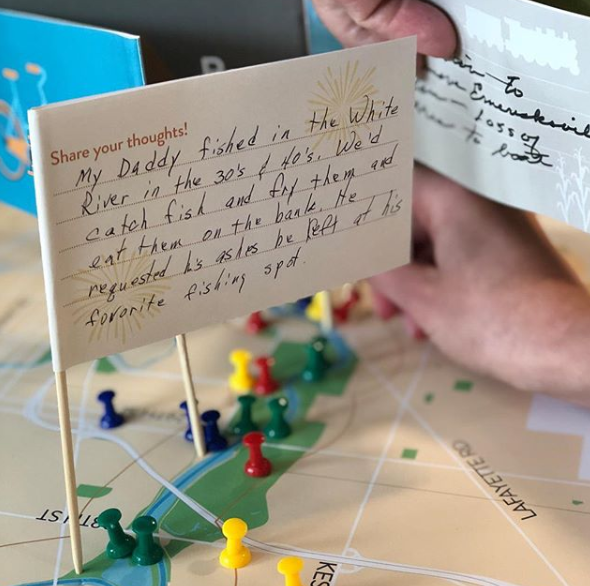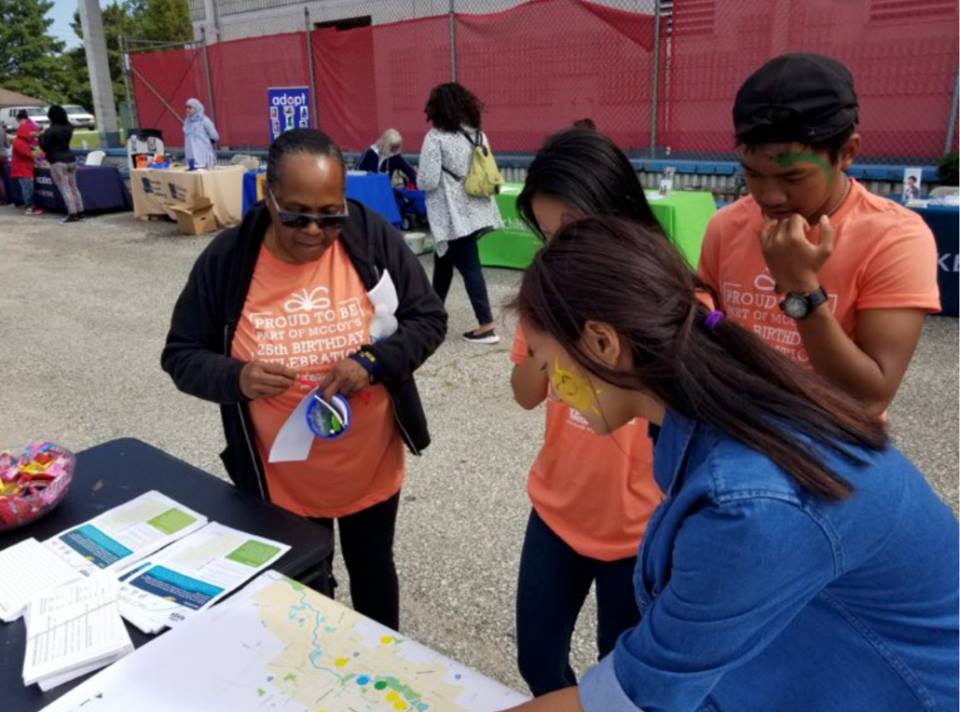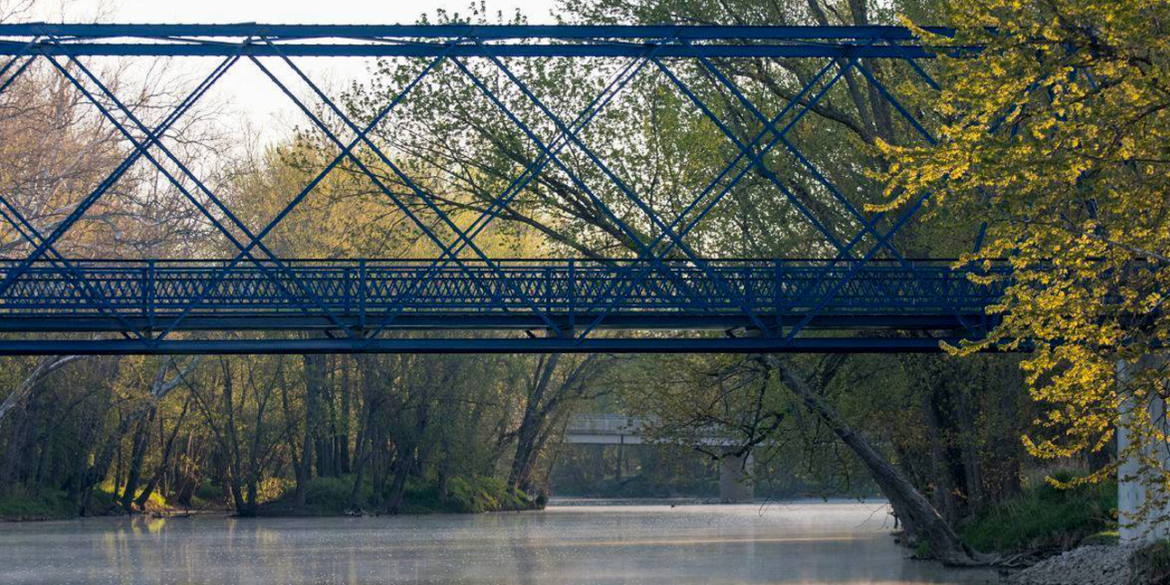If you live in Indiana, you are bound to have at least heard of the White River. Some people hike along it, some people kayak down it, and in the words of Hamilton County CEO Brenda Myers, there are also some people who “drive over it but never give it a second thought.”
Whether or not you realize it, the White River has played a big role in Indiana’s culture and history. And while it’s had its fair share of problems regarding cleanliness and proper care over its lifetime, it is still a river with a huge potential to elevate and connect many Indiana communities across 58 miles and two counties. That potential is becoming a reality thanks to the White River Vision Plan, a community-driven effort led by the City of Indianapolis, Hamilton County Tourism Inc., and Visit Indy.
Through public meetings and surveys over the past year, community leaders have been compiling ideas and strategies about how to celebrate the White River: from ecological efforts to recreational programming to historical sites. Now the vision plan is entering its action phase, which kicks off with a number of public meetings this week. This will be the first time that a preliminary design plan will be revealed, sharing seven possible points of interest along the river, and what features they could have.

Emily Mack, the director of Metropolitan Development for the city of Indianapolis, says that the types of recreational and cultural opportunities will vary based on location. The 58-mile river traverses a lot of different kinds of land, after all: from the busyness of downtown Indianapolis to the woodlands of Southwestway Park.
“It could be everything from a nature park to adding new trails to boat ramps or dinner cruises. It could be a wide variety of things,” she says. “There will be something for everyone.”
The Vision Plan is also paying a lot of attention to what parts of the White River shouldn’t be developed.
In past meetings, citizens have shown a passionate interest in protecting habitats, possibly reducing the use of dams, cleaning the river and ensuring that beloved neighborhoods are not disrupted.
Brenda Myers from Hamilton County Tourism Inc. stressed how the organizations behind the White River Vision Plan are approaching these concerns with respect and attention.
“We have a very thoughtful team and I’ve spend a lot of one-on-one time with residents, really listening,” she says. “I’ve never been involved in as public of a process as this and I think it’s been inspiring and eye-opening to try and balance our vision with a respect for generations of families that have lived on this river. This design phase is focusing on doing that. It’s trying to walk that fine line.”
Myers said that the plan is about more than just fun recreational opportunities along the river– it’s about having respect for families that have grown up on the river, and also honoring the indigenous history the river holds. After all, as Myers explained, the White River was originally named by Native Americans, because of its crystal-clear water and limestone bottom.
Since then, the water has not always been so clean and clear. In the late 1800s, certain businesses were required to be stationed along the river so they could dispose of industrial waste into its waters. Later, combined sewer overflow polluted the river more. Strides have been made in recent years to reverse these historical mistakes, thanks to projects like the Citizens Energy Group’s Dig Indy project. Mack believes that the newfound care being given to the White River is inspiring people.
“I think, from these improvements, there is finally a sense of hope and pride like, ‘Oh my gosh, we can actually do something!’” she says. “We can embrace the river, and we can engage with it in ways that we as a city, and as counties, have not been able to do in a century.”

And engage with it we will. In addition to the initial designs of the vision plan that will be released this week, there will be endless ways to collaborate within the Indiana community and turn areas along the White River into hubs for culture and art.
Myers is excited about the possibility of collaboration with arts organizations in Hamilton county, as well as with local artists and welders who are a big part of the county’s heritage. She even wants to commission an art installation depicting the “White River Monster,” a historic bit of folklore inspired by a sketch in a 1895 newspaper article.
Mack is also enthusiastic about the opportunities for art-making along the White River in Indianapolis. She suggests musicians performing in concerts, outdoor art lessons for kids, or public art installations as a few things to work towards. She also stresses that art is essential in any kind of community-building process such as this one.
To share your thoughts and suggestions, consider attending one of the public forum dates listed below. You can also share your suggestions via the interactive survey at mywhiteriver.com.
Tuesday, Jan. 29, 2019
Conner Prairie
13400 Allisonville Road
Fishers, Ind.
6:00-8:00 p.m.
Wednesday, Jan. 30, 2019
MIBOR
1912 N. Meridian Street
Indianapolis, Ind.
12:00-1:30 p.m.
Sun King Brewery
135 N. College Avenue
Indianapolis, Ind.
6:00-8:00 p.m.
Thursday, Jan. 31, 2019
Riverside High School
3010 N. White River Parkway
Indianapolis, Ind.
6:00-8:00 p.m.


